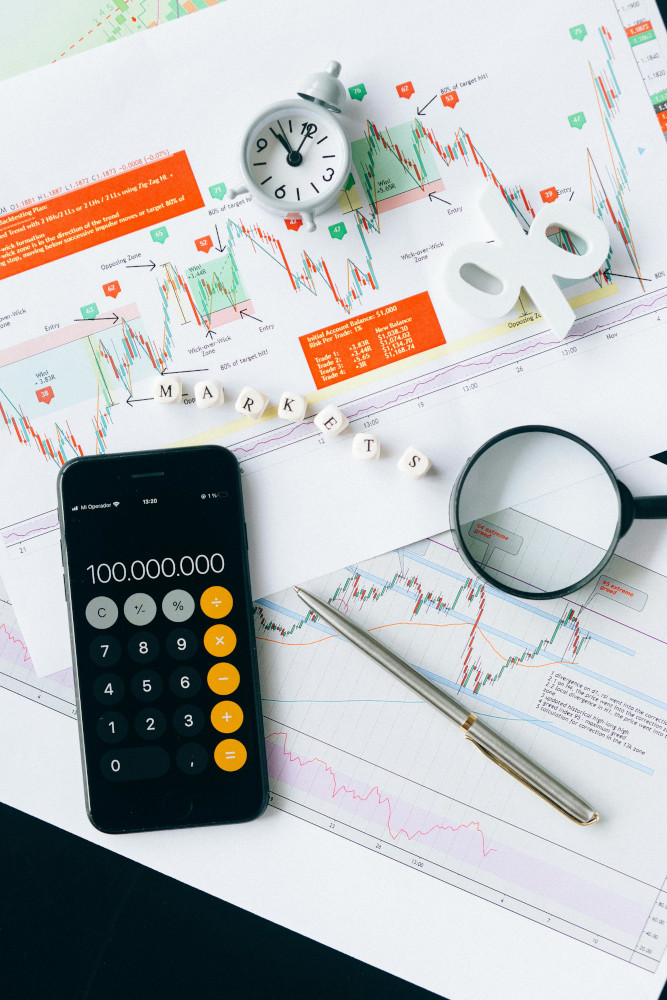The following guide is a paid advertisement. The content was provided by the advertiser.
Choosing the wrong lot size in forex is one of the fastest ways to blow your account—literally. It's not just about how much you can trade, but how much you should risk. Many traders ignore this and over-leverage. The result? Around 70% of retail forex traders lose money (ESMA report). The right lot size keeps you in the game longer, lets you survive losses and helps your account grow with control.
All you need to do is learn how to choose the right lot size by factoring in your account balance, risk tolerance, stop-loss distance and current market conditions—complete with real examples and clear calculations. It's a practical, no-fluff approach to sizing trades effectively.
Know the Three Lot Sizes
In the world of forex, a lot is the number of currency units you're trading. There are three main types:
- Standard lot: 100,000 units
- Mini lot: 10,000 units
- Micro lot: 1,000 units
Some brokers also offer nano lots (100 units), but they're less common.
If you're trading USD pairs and using a standard lot, each pip is worth about $10. A mini lot brings that down to $1 and a micro lot to just $0.10.
This matters because lot size directly impacts your profit or loss per trade. It's one of the most effective ways to manage risk. Using a Lot Size Calculator helps you quickly find the right size based on your account balance, risk percentage and stop-loss distance—so you stay in control, not guessing.
Know How Much You're Willing To Risk
Professional traders don't risk their whole account on one trade. Most follow the 1% rule—never risk more than 1% of your account balance on a single trade.
For example:
If you have a $1,000 account, risk 1% = $10.
If you have a $10,000 account, risk 1% = $100.
This is the max amount you're willing to lose if the trade hits your stop-loss.
Set Your Stop-Loss Based on Strategy, Not Emotion
Let's say your analysis tells you that you need a 50-pip stop-loss to protect your position. The stop-loss isn't just a guess—it's based on technical levels like support and resistance.
Don't shrink your stop-loss just to fit a big lot size. That's how you get stopped out early. Respect your analysis.
Example:
You're trading EUR/USD with a 50-pip stop-loss. You're risking $10 (1% of a $1,000 account).
Now you need to find a lot size where 50 pips = $10 loss.
Use This Simple Formula
Here's the standard lot size formula:
Lot Size = (Account Risk $) ÷ (Stop Loss in Pips × Pip Value)
You can use it with pip value depending on your lot size:
- Standard lot pip value: $10
- Mini lot pip value: $1
- Micro lot pip value: $0.10
Using the example above:
- Account risk = $10
- Stop-loss = 50 pips
- Pip value for micro lot = $0.10
Lot size = $10 / (50 × $0.10) = 2 micro lots
That's 2,000 units. Simple.
Pip Value Changes by Pair
Pip value can change depending on the pair you trade. USD pairs are easy, but if you trade something like GBP/JPY, the pip value will be different unless your account is in JPY.
Some brokers and trading platforms calculate pip values automatically. But if you want to double-check manually, here's a quick example for a mini lot of GBP/JPY:
- 1 pip in GBP/JPY = roughly ¥100 for 1 mini lot
- Convert ¥100 to USD (assuming 1 USD = 145 JPY)
- That's about $0.69 per pip
Knowing this helps you avoid unexpected risk.
Real-World Example of a Bad Lot Size Choice
Let's say a trader has a $500 account and opens a 0.5 standard lot (50,000 units) on EUR/USD.
That's a $5 pip value. With a 30-pip stop-loss, they're risking $150—30% of their account!
One bad trade and a third of the account is gone. Two bad trades and they're out.
That trader didn't choose a lot size—they gambled.
Real-World Example of a Smart Lot Size Choice
Same $500 account. Trader sticks to 1% risk = $5 max loss.
Stop-loss = 50 pips.
Using formula:
$5 / (50 × $0.10) = 1 micro lot = 1,000 units.
They stay in the game. Even after 10 losing trades, they've only lost $50, not the entire account.
What If You Want to Scale?
As your account grows, your lot size should too. But only based on the same formula.
A $10,000 account, risking 1%, gives you $100 per trade.
Using a 50-pip stop-loss:
$100 / (50 × $1) = 2 mini lots = 20,000 units.
You grow your size with your capital. This is how professional traders build accounts safely.
Lot Size vs. Leverage
Lot size is not the same as leverage—but they're connected. Brokers often give high leverage (like 1:500), but that doesn't mean you should use it all.
You can trade small lot sizes even with high leverage. Just because your broker allows 5 standard lots doesn't mean you should open them on a $500 account.
Focus on your risk per trade, not how much margin you have available.
Pick Lot Size That Protects You
Smart trading is not about making the most on one trade. It's about staying alive for the next 100.
Choosing the right lot size helps you:
- Control risk
- Stay consistent
- Avoid emotional decisions
- Grow your account safely
Use your stop-loss, risk percentage and pip value. Calculate it every time.
Your trading plan is only as strong as your lot size decision.
